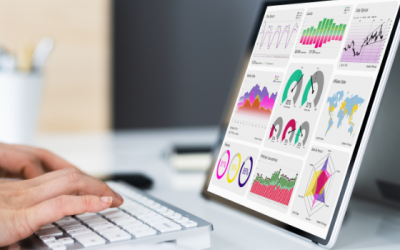Productivity is consistently the top workforce insight that companies request from ZeroedIn. No wonder – employee productivity can mean the difference between a company succeeding, failing, or just getting by. If you can picture an entrepreneur starting a business and understand how long and how hard he or she has to work to make that company a success, you’ll instantly get the reality of productivity.
Finding Productivity Metrics Depends On How You Track Your Success
Simply defined, productivity is what gets done – as opposed to performance, which is how you do it. Productivity is measured by how much is accomplished, calculated against a company baseline like number of units sold or a target such as revenue.
When ZeroedIn is asked to analyze employee productivity, we first identify the units of work for the key roles in question. Identifying what work gets done is how we determine what productivity metrics we’ll use. Companies usually have multiple ways of measuring how well they are doing based on volume (number of products, sales, or clients, for example) or financials (e.g., dollars resulting from sales or costs tied to selling).
When Is Employee Productivity Most Important To Know?
Insight into employee productivity becomes important when things change. If sales are down from the previous year, management needs to know why so they can fix the problem. Are there new competitors encroaching on market share? Is the market topped out? Or are salespeople not putting in as many hours or reaching as many customers as previously? What’s happening, and how does the workforce play a part in that?
When a client asks for analytics on workforce productivity we examine the whole picture, from the macro company level down to the micro worker level, and figure out all the metrics, the work flow, and the relationships in between.
At the company level, one of the most widely used measures of productivity is revenue per employee. Take a company with 30 employees and $10 million in revenue in one year, which equals about $333,000/employee. Whether we compare dollars per employee or widgets per employee, this measure can become a baseline for yearly comparison. It also can be compared at the business unit and department levels to determine efficiency towards staffing and if they are supporting their current and desired levels of productivity.
Using Micro-level Analytics to Tease Out Trends
At the micro level, we zero in on the individual. It’s here where analytics really shine.
We get a lot of valuable insight from trends that show up when comparing individuals across the workforce. We can take the top producer and the worst producer, for example, and delve into differences in sales, new client acquisition, unit production, and other metrics. We also can examine specific characteristics that will speak to us through the data, revealing why there are different levels of productivity – people’s training, education, supervisors, and which shifts/what time of day each works.
Factors outside the workplace come into play, too, such as differences in industries and/or different parts of the country. For example, geographic locations where the job market is plenty may not inspire all workers to always give 100% effort.
Bottom line, data shows causal relationships – influences that impact associated factors. We always look for the individual variables with the most influence in any one area (like productivity) particular to a company, so we can bring that insight to our clients.
Mining The Data To Help You Build A Success-driven Workforce
Workforce analytics is a continually evolving practice. ZeroedIn brings the value of our current HR analytics expertise along with a continuously growing data science skill set to our clients. We make the tools at our disposal do the heavy lifting, bringing you the insights needed to build a successful workforce.
Our next blog post will look at performance analytics and explain the differences between performance and productivity.




